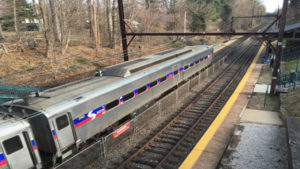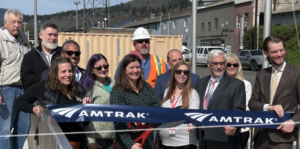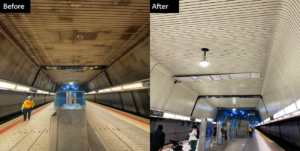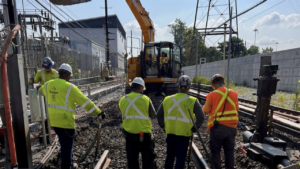Legislative leaders reach agreement to improve New York state rail safety
Written by Jenifer Nunez, assistant editor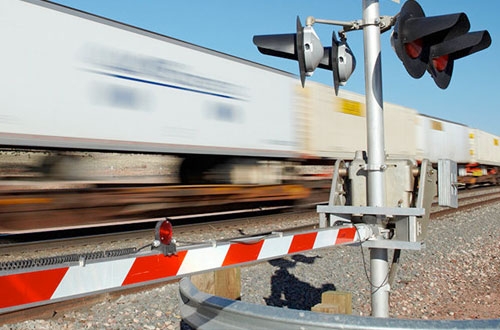
New York Gov. Andrew Cuomo, Senate Majority Leader John Flanagan, Assembly Speaker Carl Heastie and Senate Independent Democratic Conference Leader Jeffrey Klein have reached an agreement on legislation to improve rail safety measures across New York state.
The agreement includes a series of initiatives that will reduce the risk of train-motor vehicle collisions at grade crossings across the state. The new initiatives will require coordinated, frequent inspections of traffic control devices at highway-rail crossings and impose penalties on railroad companies and repeat offender drivers who continue to disobey the law and ignore important safety requirements. These laws will ensure New York State law conforms to federal safety requirements and will align state law with federal requirements for railroad bridge inspections.
“New York’s railways are critical to this state’s transportation network and we must ensure they meet the highest possible safety standards,” Gov. Cuomo said. “By requiring frequent inspections at grade crossings and increasing penalties for those who continue to violate the law and ignore important safety requirements, this agreement will help to reduce the amount of preventable tragedies that have occurred at these crossings over the years. I thank my partners in the legislature for reaching this agreement and their commitment to ensuring a safer rail system for all.”
The new legislative agreement will:
Require frequent coordinated inspections by state and local officials – Require every railroad corporation, municipality or state agency having jurisdiction of a highway on which there is an at grade crossing to conduct, at a minimum, biennial inspections of traffic control devices. This agreement will authorize the New York State Department of Transportation (NYSDOT) to establish, implement and exercise oversight over a program to coordinate the joint inspection of traffic-control signals interconnected with highway-rail grade crossing warning systems. This will ensure all interconnected crossing signals – regardless of ownership – are functioning as intended.
Align state law with federal reporting requirements –Require private railroad companies to submit railroad bridge inspection reports to the NYSDOT on the same schedule as required by the federal government. Currently, federal law requires railroad track owners to implement railroad bridge management programs that, at a minimum, provide for annual inspection of bridges by the Federal Railroad Administration (FRA), inventory of all railroad bridges and audits of the bridge management programs. It also requires railroads to document all repairs, modifications and inspections of each bridge subject to FRA review. This legislation conforms state law to such federal requirements.
Increase penalties for violations by railroads – Impose monetary penalties up to $5,000 against railroad companies for each violation, such as a failure to immediately notify the state of an accident, to submit required reports or to comply with orders of the commissioner of transportation. Railroad companies that carry hazardous materials can face up to $15,000 in penalties for similar violations.
Increase penalties for repeat offenders –Increase penalties for repeat offenders who fail to comply with safety regulations. Under this new agreement, repeat offender drivers convicted of gate running will face up $750 for a second offense and $1,000 for the third offense. Under current law, the period during which a repeat offender can be prosecuted for the same violation is 18 months. This agreement will extend that period to 30 months. Similarly, repeat offender drivers convicted of disobeying traffic signals will face up to up to $500 for a second offense and up to $750 for a third or subsequent offense. Finally, repeat offender drivers operating buses, vehicles carrying hazardous materials, and vehicles with a gross vehicle rating of more than 10,000 pound, convicted of failing to stop at highway-rail grade crossings will now face up to $500 for the second offense and up to $750 for a third or subsequent offense, with an expanded lookback of 30 months.
In addition to the agreement, the governor will also launch a pilot program to improve driver awareness and behavior at railroad grade crossings.
In 2014, there were more than 250 crossing-collision deaths in the United States. Grade-crossing accidents frequently occur at local grade crossings in the community of a driver. According to data from the FRA, 50 percent of train-motor vehicle collisions are reported to occur within five miles of the motorist’s home; 75-percent of such collisions occur within 25 miles of a person’s home.
Existing provisions of New York’s Vehicle and Traffic Law require motorists to observe safe driving behaviors at grade crossings, but law enforcement reports that many motorists fail to follow these critical safety requirements, risking their own safety, as well as those of others.
In February 2016, the FRA asked state departments of transportation to verify that railroad crossing warning systems interconnected to traffic lights function properly. According to the FRA, there are about 5,000 such interconnections nationwide, 117 of which are in New York. As a result, a statewide effort in New York has been underway to improve the coordinated operation of traffic and railroad signal systems that are in close proximity to where vehicles may queue up over the railroad tracks. As part of the 2008 Capital Program update, the Grade Crossing Safety program identified priority categories of work to focus scarce resources on improving safety in the most critical areas; interconnected signals was one of those identified.

